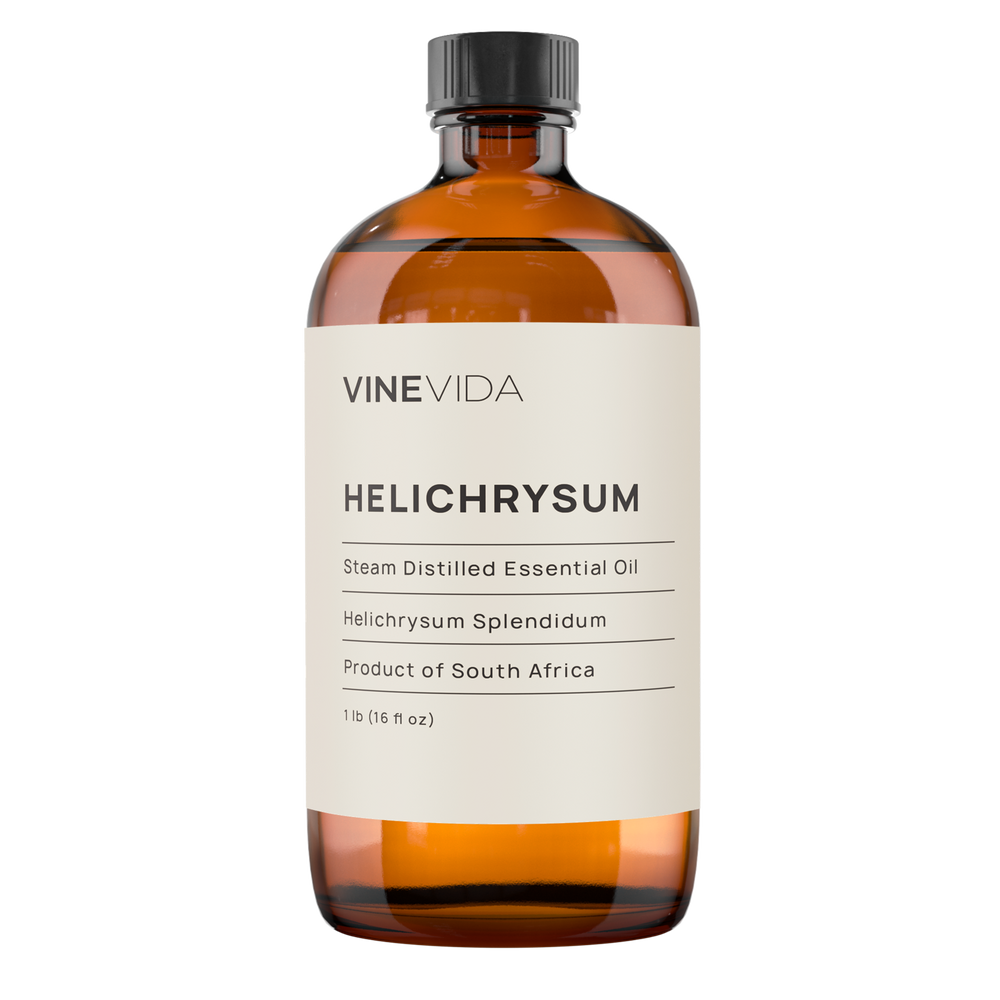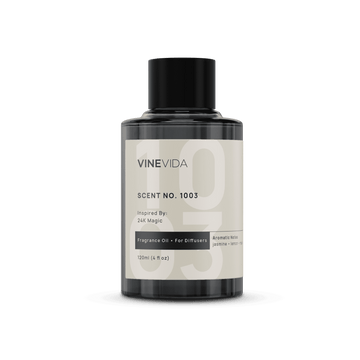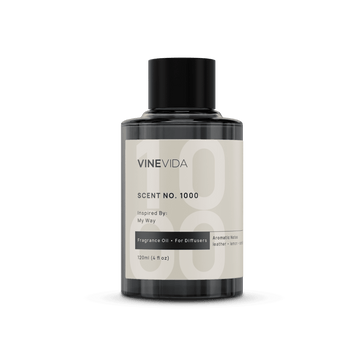Explore the best essential oils for C-section healing. We look at essential oils' multifunctional uses and properties like Myrrh, Galbanum, Helichrysum, Rose, Lavender and Roman Chamomile. Using the properties of essential oil constituents, we soothe soreness and inflammation and support immune balance, while promoting skin healing. Additionally, we relax and soothe while lifting our spirits.
We discuss how Myrrh can taste bitter in breastmilk to your baby, and if they stop feeding, that could be why. Discover how to make our three Sensational Super Soothers, a massage oil, a bath soak and an unctuous and rich body butter, all designed to target both skin and wound healing and to relax you just when you need it the most.
What is a C Section?
A cesarean section, or C-section, is a surgical operation to deliver your baby through a cut made into your tummy and womb.
The surgical cut is usually made across your tummy, just below your bikini line, to keep scarring to a minimum, where possible.
A cesarean section is a major surgical operation with several risks. Therefore, it is usually only done if it is considered the safest option for you and your baby.
Why A Cesarean?
Your health professional may recommend a cesarean as a planned, also called an elective procedure. Sometimes, it is carried out as an emergency if vaginal birth is considered too risky for both mom and baby.
Planned cesareans are usually carried out from the 39th week of pregnancy.
There are many reasons why a cesarean section may be performed. Here are some of the most common reasons, according to the NHS.
- "Your baby is in the breech position (feet first), and your doctor or midwife has been unable to turn them by applying gentle pressure to your tummy, or you'd prefer they did not try this.
- You have a low-lying placenta (placenta praevia)
- You have pregnancy-related high blood pressure (pre-eclampsia)
- You have certain infections, such as a first genital herpes infection late in pregnancy or untreated HIV.
- Your baby is not getting enough oxygen and nutrients – sometimes, this may mean the baby needs to be delivered immediately.
- Your labor is not progressing, or there's excessive vaginal bleeding."
Rising Numbers of C Sections
In 2021, 32.1% of live births in the United States were cesarean deliveries, as opposed to 25% in the UK. This has risen from just 10% in the 1970s.
Concern has been expressed at the rising rate of C-sections, and a study by Childbirth Connection explored why the US C-section rate is so high. They surmised that:
"Average hospital payments are much greater for cesarean than vaginal birth, and may offer hospitals greater scope for profit. All of these factors contribute to a current national cesarean section rate of over 30%, despite evidence that a rate of 5% to 10% would be optimal."
Food for thought if you are planning an elective cesarean. However, you are here, so I am guessing it's already happened; let's crack on with the good stuff!
Benefits of Using Essential Oils For C Section Healing
Turning to aromatherapy and natural remedies during your postpartum recovery has many benefits. When your body and tissues have sustained the trauma of a c- section, it makes sense to seek out essential oils to aid the healing process.
Using essential oils for their many varied healing properties can promote that deep healing you feel you need at this time. Remember, this healing is not just for your body but also for your mind and spirit when you need all the help you can get!
Where there is skin injury and trauma, we want essential oils with constituents that can reduce inflammation and swelling. Addressing this also reduces pain and discomfort. Lavender essential oil is lovely for this.
We want to look for essential oils like Myrrh that contain skin-healing constituents that can knit the skin. The better our skin's healing, the more improved the chances are that you can reduce scar tissue and end up with a much fainter C-section scar. Reducing scarring should be part of your C-section care and regimen.
As a teenager, I had awful acne and part of my skincare kit was Jasmine Absolute to reduce the chances of the deeper, more persistent acne scarring my face. It worked! It is something that I have used to significant effect in the past with several clients on their scars. The dilution rate is vital to using this absolute safely; it is just 0.60%. However, turn to Jasmine when your baby is born. Antenatal is a uterine tonic. We don't want to start labor early inadvertently.
Essential Oils for C-Section Healing
It would be easy to focus only on skin healing here, but I want you to explore essential oils that can be considered multifunctional, like Rose, Lavender and Chamomile. Using these essential oils benefit not only your skin but also your mood and relaxation levels.
Having a baby can be extremely stressful as you get used to new routines, lack of sleep and the inevitable hormonal tidal wave. I recommend using essential oils that will calm and relax you and relieve some of your anxieties.
You can create various effective products for your postpartum care with just a handful of essential oils.
Look at some of the recommended essential oils for C-section healing.
Myrrh (Commiphora myrrha)
Myrrh essential oil is the master of knitting skin back together, earning the nickname among Aromatherapists of 'Liquid Stitches.' In our house, as children, it was the go-to essential oil where there was any skin trauma or injury, and it still is—a testament to its ability to consistently deliver, in my opinion, quite astonishing results.
Myrrh is contraindicated until 37 weeks of pregnancy because of its intense action in the womb. However, that means that postnatally it will assist the womb to contract and reduce back to its standard size.
It is also a naturally soothing and uplifting essential oil and can help elevate your mood while calming your 'new mom' nerves.
Liz says, "There is something very womanly yet strong about myrrh essential oil. It has depth and grit and instills courage and determination when times are hard".
Myrrh is safe during breastfeeding and is always our first choice for dealing with sore and cracked nipples. However, it can taste very bitter to your baby and they may refuse to feed.
Remember that essential oils also pass into breast milk, and your baby will potentially still be able to taste it. If your baby suddenly refuses to feed, stop using Myrrh immediately; if it continues, stop using all essential oils and try again.
Safety - Do not use it in the first 37 weeks of pregnancy.
Rose (Rosa damascena)
Rose would always be my top choice for any postpartum care. Its skin-nourishing qualities aside, it is widely utilized to lift mood and relieve anxiety and depression.
Studies conducted by Hongratanaworakit (2009) and Mohebitabar (2017) concluded that Rose essential oil had anti-anxiety and relaxing effects, probably through the observed decreases in breathing rate, blood oxygen saturation and blood oxygen saturation and systolic blood pressure.
Mohebitabar (2017) also says, "According to Persian Medicine, some other pharmacological activities including anti-inflammatory and anti-hemorrhoidal properties have been attributed to this oil." It is potentially an essential oil to consider if pregnancy has blessed you with hemorrhoids and a beautiful baby.
This makes rose one of those ideal multifunctional essential oil, soothing inflammation and encouraging healing while reducing anxiety and depression.
Safety - Do not use it in the first 37 weeks of pregnancy.
Galbanum (Ferula galbaniflua)
I have to confess that up until about 10 years ago, I had barely used Galbanum; now, it is always in my top ten favorite essential oils.
I was always known as the 'potions lady' at the camps I attended, so it was never unusual that someone would traverse the field looking for a 'remedy.'
I had been collecting foliage for decoration and got pricked by a rather vicious blackthorn. Blackthorn pricks and nicks are notorious for slow, painful healing. (Quite what made me bring it with me that year remains to be seen). One drop of Galbanum in a carrier oil sorted it out immediately.
Later that day, it was gone, like it never existed. It was almost like magic. I never looked at that little bottle in the same way.
As for C-section healing, Galbanum is a rich oil that comes to the rescue. Galbanum is one of the best essential oils you can use if your skin looks sore, dry and parched.
We also recommend it for elbows, knees, hands and feet salves to tackle drier skin conditions and skin cracks.
Safety - Do not use it in the first 16 weeks of pregnancy.
Lavender (Lavandula angustifolia)
Lavender is one of those widely used essential oils, utilized across the globe by millions of people. It would always be interesting to collate all the different things that people use it for. It would make for a very long book.
Aromatherapists use Lavender essential oil to soothe, but it also has constituents that have anti-inflammatory, analgesic, and antibiotic effects, just what you want in wound healing.
We all know it is used to induce relaxation, reduce anxiety and relieve depression. You can benefit from those beautiful actions by including them in your selection of essential oils for C Section healing.
Safety - Do not use it in the first 16 weeks of pregnancy.
Helichrysum (Helichrysum splendida)
Helichrysum is a beautiful essential oil for healing broken skin. Aromatherapists widely use it for skin wounds, particularly those that seem to resist healing.
Helichrysum is rich in Neryl acetate, a constituent that is particularly good at healing the skin where there is inflammation present. Helichrysum is the perfect oil choice for skin trauma in particular. It reduces the swelling, soothes the pain of the wound, lessens redness and heals skin quickly.
Safety - Do not use it in the first 16 weeks of pregnancy.
Roman Chamomile (Anthemis nobilis L.)
Roman Chamomile essential oil is always at the top of my list where a soothing effect is needed, especially when it is needed upon itchy skin, which healing skin often is.
Kazemian (2018) found that Roman Chamomile not only aids in wound healing but also works synergistically with antibiotics against antibiotic-resistant bacteria in wound infections. This makes it a fantastic choice for utilizing right away and getting the healing processes started while the intravenous antibiotics from the operation are still in your system.
Roman Chamomile essential oil is lovely to soothe our mood, making it one of those valuable and useful multifunctional essential oils.
Safety - Do not use it in the first 16 weeks of pregnancy.
Safety and Breast Feeding Considerations When Using Essential Oils for C-Section Healing
Direct and Indirect Methods
Firstly, please follow advice from your ObGyn, midwife and doctor about when to apply aromatherapy products directly to your C-section wound.
You do NOT want to apply essential oils DIRECTLY onto an open wound.
Indirect application means applying around the wound, especially if it is still dressed. You can apply it to your hips, upper abdomen and thighs instead.
The indirect application will still have an effect because the essential oils are absorbed into your bloodstream through the topical application on your skin.
Breastfeeding Considerations
It is important to realize that essential oils pass through to breast milk and can affect the taste of breast milk for your child.
While Myrrh essential oil is deemed to be safe for breastfeeding, as an essential oil it does pass through into breast milk, which not all babies like. In the Bible, it is quoted as "The bitter taste of myrrh…" so you need to factor this into your decision-making process.
If your child suddenly becomes reluctant to feed, cease use for a couple of days to ensure it is not the essential oil(s) affecting their palate.
Super Soothers With Essential Oils for C-Section Healing
I wanted to create a small but effective kit of products for your postpartum care. I covered a range of applications that can be used right from your first day as a new mom.
Try to use the highest quality and best essential oil and carrier oils you can afford to make these products.
After what you and your body have just been through, you deserve the best.
So treat yourself!
I have developed the following for your C-section and postpartum care.
- Super Soothing Massage Oil - This is packed with properties from both the essential and carrier oils that promote healing of the skin and will nourish it deeply. This brings softness and suppleness to your newly healing skin.
- Super Soothing Bath Soak - A salt-based soak thoroughly laced with essential oils to promote skin healing…and relaxation. Because let's face it, by the time you have found time to have a bath, you'll need all the help you can get to relax and enjoy it. Remember to give time for all those beautiful properties to work on your skin. We recommend being in the water for at least 20 minutes to absorb all those fantastic qualities. The salt is healing in its own right and has been used by women in postpartum recovery for millennia.
- Super Soothing and Rich Body Butter - Use this once the wound is fully closed. It will help feed and nourish the skin, and you could add Jasmine to help reduce the chances of scarring.
Super Soothers With Essential Oils for C Section Healing - The Recipes
| Super Soothing Massage Oil | |||
|---|---|---|---|
| A deeply nourishing combination of sublime carrier oils and fragrant essential oils to nourish your skin and spirit. It can also be used as a bath oil, if preferred. | |||
Equipment needed:
|
|||
| Carrier Oils | |||
| ¼ cup Rosehip Seed Carrier Oil | 1 cup Argan Carrier Oil | ¼ cup of Tamanu Carrier Oil | ½ cup Jojoba Carrier Oil |
| Essential Oil Blend | |||
| 100 drops = 1% dilution | |||
|
30 drops of Rose Essential Oil (Rosa damascena) |
10 drops of Galbanum Essential Oil (Ferula galbaniflua) |
40 drops of Roman Chamomile Essential Oil (Anthemis nobilis L.) |
20 drops of Myrrh Essential Oil (Commiphora myrrha) |
Method:
|
|||
|
Safety: Not suitable for use in the first 37 weeks of pregnancy May affect the taste of your breastmilk, if your baby refuses to feed, cease use immediately. Please check with your health professional, when it is safe to use this product for your individual circumstances. |
|||
|
How to Use: Please check with your health professional in the first instance. Use this indirectly, right from day one to get the healing process started and give it a great kick start and boost with these wonderful essential oils and all their fantastic properties. You could rub over your abdomen, above your dressing, across your hips and on the top of your thighs. The essential oils will be absorbed into your bloodstream and still work just the same way. As soon as your wound is healed and the skin knitted together you can massage it gently directly over the area. After a few weeks you can massage it more firmly to encourage healthy skin cell production and suppleness and flexibility in the skin and underlying tissue. This may help reduce the appearance of your C-section scar. This can also be used as a bath oil. Use a non slip mat to reduce the risk of slips and falls. |
|||
| More Ideas: Get your partner involved in a Five Minute Shoulder Massage. | |||
| Super Soothing Bath Soak | ||
|---|---|---|
| While essentially this is classed as a Bath Scrub, here it offers the nourishing blessings of both salt and carrier oils. It really is a wonderful product when simply dissolved into warm bath water. It is great if you have had a vaginal delivery too. | ||
Equipment needed:
*Note that different manufacturers may have different instructions, so always follow the manufacturers' guidelines for the product you are using. |
||
| Ingredients | ||
| ½ cup Pink Himalayan Rock Salt | ½ cup Epsom Salt | 1 ¼ cup Tamanu Carrier Oil |
| ½ cup Sea Salt | ½ cup Magnesium Flakes | ¼ cup Rosehip Carrier Oil |
| Essential Oil Blend | ||
| 20 drops = 1% dilution | ||
|
5 drops of Myrrh Essential Oil (Commiphora myrrha) |
3 drops of Galbanum Essential Oil (Ferula galbaniflua) |
3 drops of Helichrysum Essential Oil (Helichrysum splendida) |
|
5 drops of Lavender Essential Oil (Lavandula angustifolia) |
4 drops of Roman Chamomile Essential Oil (Anthemis nobilis L.) |
|
Method:
|
||
|
Safety: Not suitable for use in the first 37 weeks of pregnancy May affect the taste of your breastmilk, if your baby refuses to feed, cease use immediately. Please check with your health professional, when it is safe to use this product for your individual circumstances. |
||
|
How to Use: As soon as you are allowed to bathe. Dissolve in the warm bath water and make sure it is evenly distributed in the bath. Gently rub the oils into your skin. Take care entering and exiting the bath as it may be slippy. We recommend using a non-slip bath mat in the bath when using this product. |
||
| More Ideas: How To Make Bath Scrubs With Essential Oils | ||
| Super Soothing and Rich Body Butter | ||
|---|---|---|
Equipment needed:
|
||
| 5 Oz of butter made up of the following butters | ||
| 1 oz of Cocoa Butter | 3 oz of mango Butter | 1 oz of Shea Butter (refined has a better scent profile and is less overwhelming). |
| 2.5 Oz (71g) liquid carrier oils made up of | ||
| (Add an Extra 0.25 Oz (7g) of extra oils in case a softer texture is needed) | ||
| 0.5 oz Rosehip Seed Oil | 1 oz Argan Oil | 1 oz Jojoba Oil |
| Essential Oil Blend | ||
| 40 drops = 1% dilution | ||
|
10 drops of Myrrh Essential Oil (Commiphora myrrha) |
20 drops of Lavender Essential Oil (Lavandula angustifolia) |
10 drops of Helichrysum Essential Oil (Helichrysum splendida) |
Method:
|
||
|
Safety: Not suitable for use in the first 37 weeks of pregnancy May affect the taste of your breastmilk, if your baby refuses to feed, cease use immediately. Please check with your health professional, when it is safe to use this product for your individual circumstances. |
||
| How to Use: When your C-Section wound has knitted together and the skin freshly healed rub this gently into the area 3-4 times a day. As the healing progresses over the weeks, you can massage it slightly deeper to encourage suppleness and the promotion of skin cell production. This can help to reduce the appearance of the C-Section scar when used over time. | ||
| More Ideas: How To Make Body Butter With Essential Oils | ||
The Final Word

It is hard being a new mom at the best of times but having a C-section is major surgery, and you need to look after yourself during your postpartum period. Using essential oils will not only help heal your physical wound, but it can help you feel more relaxed and less anxious.
This is vitally important because it can be easy to get overwhelmed, overtired, highly stressed and potentially develop postpartum depression. Read Liz's A Complete Guide To Essential Oils For Postpartum Depression; talk to your health professional if you find things challenging.
It can be when you are experiencing a tidal wave of hormones and emotions, and you can use essential oils like Rose and Ylang Ylang to regain hormonal balance.
Remember to explore these essential oils' many beneficial facets and properties and use them for dual purposes like Myrrh's skin healing and mood elevation. You may want pain-killing and relaxation. Plump for Lavender. The more you learn about these essential oils, the more you will get out of them.
These six essential oils can cover many families' aromatherapy needs and be well justified as permanent residents in your bathroom cabinet.
Now that you have discovered the best essential oils for C-section healing, you can create these sublime and soothing sensations for yourself.


















